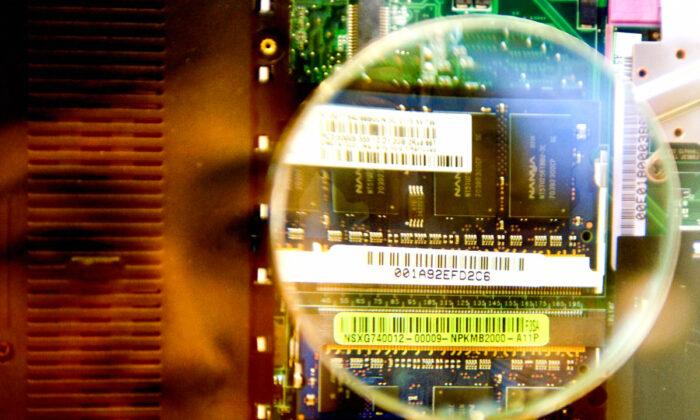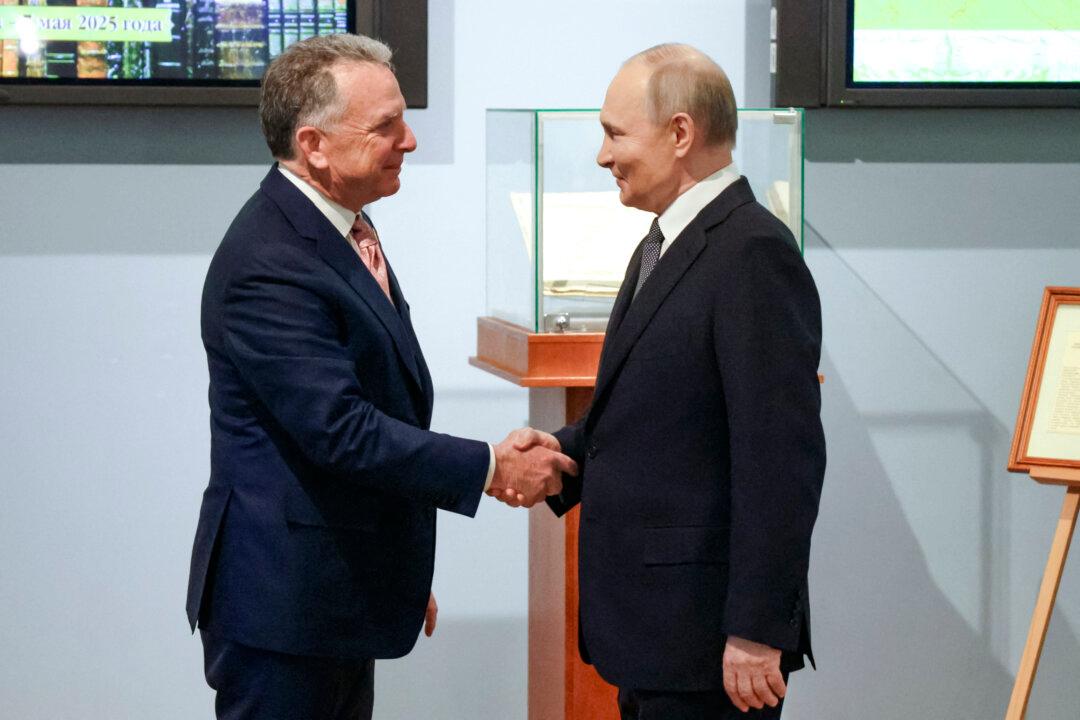“China’s recent hypersonic missile test is part of a troubling pattern,” Gallagher said in an email. “From this test, to the Wuhan Institute of Virology, to Xinjiang, U.S. technology has contributed to the Chinese Communist Party’s ability to kill Americans, conduct dangerous research, and commit genocide.”
Gallagher says the recommended policy proposals represent the bare minimum necessary to secure U.S. technologies from being used by the CCP to either attack or otherwise undermine the United States, its allies, and their interests abroad. American companies, he added, need to do more to prevent their technologies from being co-opted by the regime.
“The federal government needs to wake up to this threat and, at a minimum, impose the export controls that members of the China Task Force outlined to Secretary Raimondo this week,” Gallagher said.
US Allows Restricted Technologies to be Sold to Civilian Sector
Security experts have long called for a ban on so-called “technology transfers” of key emerging technologies like artificial intelligence and quantum computing between the United States and China.The lawmakers’ letter to Raimondo raised the same concerns and warned that inaction could lead to the empowerment of what they referred to as a “genocidal, authoritarian regime.”
In theory, U.S. export control laws are in place to prevent sensitive American technology from getting into the hands of foreign actors that pose a threat to national security, including the Chinese military. But a key problem with these laws, the letter contended, was that controlled items were still allowed to be exported to China so long as the end-user of the product was within the civilian sector.
The United States has thus far refrained from seriously impeding upon such sales to the civilian sector in an effort to promote free trade and greater economic prosperity.
The letter pointed to the issue of U.S. semiconductor technology transfers to China. China lacks the means to produce advanced semiconductors on its own and its military relies on U.S. technologies to create them. In theory, the Commerce Department’s Bureau of Industry and Security (BIS) must license military technologies for export. But because the United States allows for technologies with national security applications to be sold to the civilian sector without a license if it is deemed the company will only use them for civilian purposes, the vast majority of semiconductor technologies exports do not go through the BIS licensing process, according to the letter.
“Lax export controls make it very easy for critical technology to be sent to China directly, or through a proxy company or nation with China as the end destination,” said Casey Fleming, CEO of the strategic advisory firm Black Ops Partners.
Another example of lax export policies pointed to in the letter is that companies are easily able to dodge the effects of being blacklisted for their connections to the Chinese regime by simply changing their company name or restructuring.
“We face considerable roadblocks to limiting critical and emerging technologies due to the fragmentation of our government competing with the quest for commercial profit,” Fleming said.
Chinese Military Has Access to Everything
That whole-of-nation response, a joining of centralized government policy and action and support from the private sector, is precisely what was sought after in the letter sent to the commerce secretary.China’s national security and intelligence laws, meanwhile, mandate that all companies doing business in mainland China or that are operated by Chinese citizens can be ordered to surrender their data to the CCP at will.
Officials and experts say that this means that any technologies developed by American companies in China could be seized by the CCP at any time. The same is true of technologies supplied to Chinese-owned companies by U.S. companies and even of the intellectual property of American companies that are funded by Chinese investors, they say.
In other words, the United States allows the sale of vital technologies to civilian sectors in China, but the PLA can force those sectors to hand over that technology at any given time.
“China’s policy of military-civil fusion is leading to the inclusions of new technologies for their military,” Rep. Mike Waltz (R-Fla.), another signatory to the letter, said in an email.
“These technologies include advanced, heat resistant technologies, Precision Navigation and Timing (PNT), and AI,” Waltz added. “Many of these technologies have been stolen from the United States and other western countries.”
Given the nature of the CCP’s national security laws, Waltz said that he believed Raimondo’s efforts to increase trade with China were directly hampering U.S. national security efforts by funneling American resources to the CCP and PLA.
“Our trade deficit sits at around $400 billion and [is] flowing directly into China’s manufacturing base, fueling their military expansion, and creating global dependencies through their Belt and Road Initiative,” Waltz said.
“The United States must take a whole-of-government approach to confronting the existential threat coming from the CCP.”
“There are multiple examples in which technology, data, talent and intellectual capital from these emerging U.S. technology sectors have been acquired by the PRC [People’s Republic of China] government and put to use in fulfilling the PRC’s national and geopolitical goals,” Dean Boyd, chief communications executive for the NCSC, said in an email.
Such an effort appears to fall far short of the changes desired by the House Republicans’ China Task Force, however.
For now, Fleming said that the United States’ lax export controls would continue to provide strategic advantages to the Chinese regime and its weapons development efforts until the time came that the administration accepted it was engaged in an undeclared war with China.
“We are in a true wartime scenario, with unrestricted hybrid warfare waged by the CCP using many tactics and methods short of conventional war to weaken and destroy freedom and democracy worldwide,” Fleming said.
“U.S. leadership will understand the immediate need for a full technology lockdown when the Chinese Communist Party’s strategy to destroy democracy worldwide is accurately considered.”
Commerce Department officials didn’t immediately respond to a request by The Epoch Times for comment.





